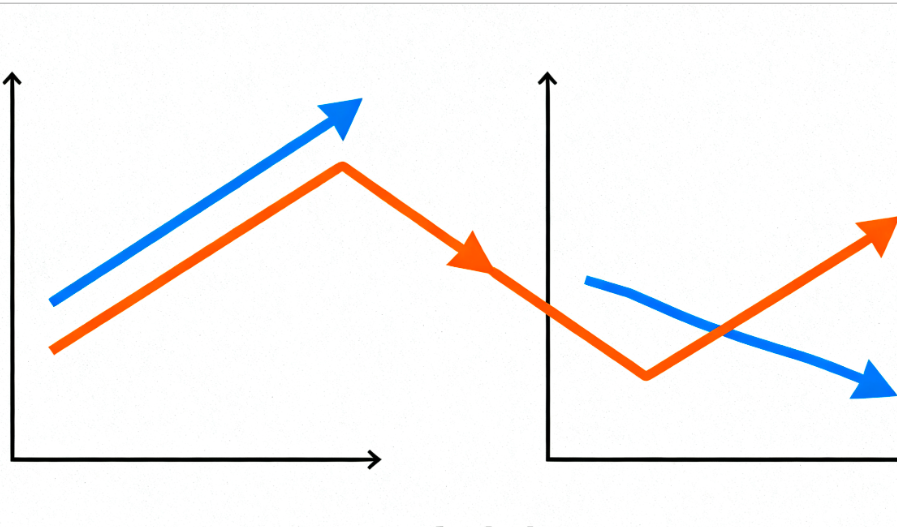
Compliance Insights in the MiCA Era
With traditional finance funds continuously flowing into the crypto market, more and more investors are seeking stable and reliable crypto asset investment management services. Especially for those investors who are tired of chasing daily market trends and experimenting with various new strategies, they are eager to plan their crypto asset portfolios within a more traditional investment management context.
The EU's Markets in Crypto-Assets Regulation (Regulation (EU) 2023/1114, MiCA), as the world's first unified regulatory framework for crypto assets, not only imposes comprehensive requirements on exchanges, wallet service providers, etc., but also, for the first time, brings innovative businesses like portfolio management, copy trading, and staking into a regulated system.
Under the MiCA framework, several Crypto-Asset Service Providers (CASPs) have already obtained regulatory licenses and begun providing services like portfolio management. To date, 10 licensed entities in the EU are helping clients manage crypto asset portfolios, including major platforms like eToro and Kraken. eToro offers asset allocation advice through its Smart Portfolios feature, combined with a social trading model for strategy copying, attracting a large number of users seeking automation and low-barrier investment. Kraken, on the other hand, has expanded its services beyond crypto asset trading to include staking and is exploring compliant cross-border asset management models.
The enactment of MiCA brings these innovative businesses under a unified regulatory framework for the first time. This change not only impacts the European market but also sets a compliance "weather vane" for global crypto asset enterprises: in the future, all service providers involving portfolio management, staking, or copy trading must directly address regulatory challenges. For crypto asset platforms, fund managers, and even individual investors, this presents two practical questions:
-
How to continue innovating under compliance prerequisites?
-
How to handle cross-border regulatory differences to ensure the sustainability of global business expansion?
Copy Trading and Quantitative Strategies
MiCA provides clear compliance definitions and requirements for Portfolio Management: any CASP providing crypto asset portfolio management must conduct a suitability assessment of the client's experience, knowledge, investment objectives, and ability to bear losses before providing the service. If the client fails to provide relevant information, or the assessment indicates the investment is unsuitable, the service provider must not provide portfolio management or related advice.
Furthermore, when providing investment advice, the CASP should issue a report including the suitability assessment, explaining how the recommended crypto assets or services align with the client's preferences and objectives. When providing portfolio management, the CASP must also periodically report to the client, summarizing portfolio performance and updating the suitability assessment. This regulation directly raises the compliance threshold for Portfolio Management and strengthens investor protection.
In the field of crypto asset investment, copy trading and quantitative strategies are gradually becoming common Portfolio Management methods among MiCA-licensed CASPs. These two strategies use technological means to improve investment efficiency and potential returns, attracting many investors hoping to leverage technological advantages for asset appreciation.
Copy Trading, as the name suggests, allows investors to follow the investment strategies of experienced traders. Platforms provide transparent trading signals and historical performance, allowing users to select and replicate the strategies of professional traders. Its core characteristic is directly connecting investors with experienced traders; investors automatically replicate every action of the trader through the platform, thereby lowering the investment barrier. This type of service is particularly suitable for investors lacking professional knowledge but hoping to benefit from others' experience.
Algorithmic Trading utilizes mathematical models and statistical methods for data analysis and automatically executes trading decisions through algorithms. In the crypto asset market, algorithmic trading often combines big data, machine learning, and artificial intelligence technologies to achieve high-frequency, automated investment operations. Compared to manual trading, algorithmic trading executes faster, is more disciplined, and can quickly make objective reactions that "go against human nature" in a rapidly changing market environment, reducing biases from human judgment. Thus, it has gradually become an important product type offered by MiCA-licensed CASPs to investors.
It is worth noting that MiCA does not explicitly require the underlying asset type for portfolio management to be limited to crypto asset spot or derivatives. Although in practice, many platforms may choose crypto spot as the underlying asset, especially due to its transparency and relatively easier risk management, the use of derivatives (such as futures, options, etc.) as underlying assets is not explicitly distinguished by MiCA's regulatory requirements. When underlying assets involve crypto derivatives, potential conflicts or overlaps between crypto regulation (like MiCA) and traditional financial regulation (like MiFID) may arise.
MiCA stipulates the compliance requirements for Portfolio Management and, in some aspects, references MiFID standards, particularly regarding suitability assessments and investor protection. However, MiFID's regulatory scope is not explicitly limited to fiat currency derivatives; some crypto derivatives might also fall under MiFID's definition of financial instruments, thus requiring compliance with both MiCA and MiFID requirements. This dual regulation may pose compliance challenges, especially where there might be overlaps or differences in product compliance assessment, capital requirements, and derivatives trading rules.
Although these two strategies differ in their methods of achieving investment objectives, they both face compliance challenges and opportunities. The following will use two representative jurisdictions known for strict compliance as examples to explore their regulatory requirements for copy trading and quantitative strategies.
-
European Union (MiCA)
In the EU, MiCA, as a unified regulatory framework, imposes detailed requirements on CASPs, with particular emphasis on investor protection. For Portfolio Management service providers, the core requirements include:
-
Suitability Assessment Obligation: Before providing advice or portfolio management, a suitability assessment must be conducted for each client, covering knowledge and experience, investment objectives/risk tolerance, financial situation, and basic understanding of crypto asset risks. Portfolio management can only commence if the client is deemed "suitable." If the client does not provide information or is assessed as unsuitable, portfolio management must not be initiated. Re-assessment is required at least every two years.
-
Periodic Reporting Obligation: At least quarterly, a periodic portfolio management statement must be provided to the client (in electronic form; an "online continuously available + reminder" mechanism can be used if the client has an "online system" and has accessed it during the quarter). The content must "fairly and balancedly" review portfolio activities and performance and update suitability information.
-
Cost and Fee Transparency Disclosure Obligation: Assess the "cost and complexity of equivalent products" within the suitability framework and provide clear disclosure of all involved fees and third-party benefits.
-
Market Fairness: MiCA requires platforms not to use algorithms or copy mechanisms to manipulate market prices and must maintain fairness and transparency.
-
United States (SEC and CFTC)
In the US, regulation of copy trading and quantitative strategies is shared by the SEC and CFTC, mainly reflected in:
-
Registration and Compliance: Copy/mirroring or model-driven strategies, if constituting advice to clients regarding securities or discretionary management, typically fall under the investment adviser category under the Investment Advisers Act of 1940, requiring registration, fiduciary duties, disclosure, and other compliance obligations. Quantitative/algorithmic trading involving commodity derivatives falls under the CEA and CFTC regulatory framework; whether it triggers identities like CTA/CPO/FCM depends on the specific business.
-
Risk and Suitability Disclosure: The SEC emphasizes full and non-misleading disclosure (model assumptions, data and limitations, backtesting and performance presentation, risks of deviation from client objectives, etc.) and fulfillment of fiduciary duties for "algorithms/robo-advisors," and focuses on these aspects during examinations.
-
Anti-Market Manipulation: Both the SEC and CFTC prohibit using copy or algorithmic trading to manipulate markets or engage in insider trading. The CFTC prohibits manipulation and fraudulent devices under CEA §6(c)(1) and 17 CFR 180.1/180.2; the SEC employs anti-manipulation/anti-insider frameworks like Exchange Act §10(b)/Rule 10b-5, §9(a)(2), etc.
Legal Risks Under Technological Innovation
As the crypto asset market matures, staking, an essential component of blockchain network validation mechanisms, has become one of the core services offered by mainstream crypto asset platforms. Staking essentially involves cryptocurrency holders locking their assets on the blockchain to support network operations and receiving rewards through this process.
Many mainstream crypto asset service platforms like Kraken, Binance, and Coinbase offer staking services, allowing users to commit crypto assets to the network to earn staking rewards. Staking has significant financial characteristics, making it a key focus for compliance development in various jurisdictions. For example, after Kraken was ordered by the US SEC to cease its staking service in 2023, it underwent a large-scale overhaul of its staking business, adding user authorization processes, independently custoding user assets, and standardizing reward disclosure methods to ensure its staking service met regulatory requirements. The regulatory status of staking varies significantly across different jurisdictions:
-
Differences in Legal Recognition of Staking
The recognition of staking businesses varies greatly across jurisdictions:-
EU: MiCA classifies staking services as ancillary to custody services. Crypto asset staking service providers must be authorized to provide custody and administration services for crypto assets on behalf of clients and are liable for losses of crypto assets resulting from providing staking services to clients or from the staking activities themselves.
-
US: The SEC uses the Howey Test as a standard, conducting case-by-case assessments of staking businesses. It focuses on whether the staking business involves factors like packaging by an intermediary, profit promises, and expectation of consideration, tending to view staking as an "investment contract," thus requiring registration of related services.
-
Singapore: Staking services offered to the public generally fall under the Digital Payment Token (DPT) service provider framework (PSA/FSMA). Regardless of whether clients are overseas, service providers must be licensed and comply with strict AML/CFT, client asset custody, and disclosure requirements. There is no transition period; those without a license must cease operations.
-
Hong Kong: Explicitly incorporates staking business into the regulatory system. Licensed Virtual Asset Trading Platforms (VATPs) are allowed to provide staking services to clients with prior approval but must comply with a set of Staking Terms & Conditions (Staking T&Cs), covering custody and control, client authorization and disclosure, risk control, and operational requirements.
These differences necessitate that cross-border staking businesses follow the "strictest standard first" principle in their design; otherwise, they risk being deemed non-compliant in some countries.
-
-
Core Elements of Staking Compliance
To reduce compliance risks, staking platforms should focus on the following three areas:-
Segregated Custody of Client Assets: Prevent the platform from commingling client staking assets with its own funds; ensure client assets can be fully returned in case of bankruptcy or liquidation.
-
Transparent Reward Distribution Mechanism: Disclose reward calculation methods, distribution frequency, potential reward volatility, and establish on-chain verifiable data records.
-
Risk Warnings and User Education: Clearly explain risks that may arise during staking, such as network attacks, contract vulnerabilities, and policy changes, and provide risk questionnaires and educational materials for retail users.
However, precisely due to regulators' strict stance on staking services, licensed crypto asset platforms are generally cautious when offering staking services. Many platforms choose to avoid or strictly limit the scope of staking services to meet the compliance requirements of different markets.
-
Case Insight: Kraken's Staking Overhaul
After facing SEC enforcement in 2023, Kraken overhauled its staking business: added user authorization processes to ensure users understand staking rules; moved staked assets into independent trust accounts; standardized reward disclosures, providing real-time yield calculation models. In January 2025, Kraken announced the relaunch of its staking business in 37 US states and 2 territories. This case demonstrates that staking compliance is not just about filing but involves business structure restructuring, risk management system upgrades, and ongoing regulatory communication.
Core Ideas for the Compliance Path
Faced with an ever-changing global regulatory environment, crypto asset enterprises need to find a balance between different markets when formulating their compliance path. The following three principles help enterprises find the right direction within the complex compliance system.
-
Prioritize the Strictest Jurisdictions: Starting with the US and EU
Enterprises should first refer to the world's strictest regulatory standards, such as those in the US and EU. This is particularly evident in Kraken's strategy. As a globally renowned digital asset exchange, Kraken adopted compliance measures based on EU and US regulatory requirements, gradually expanding into other markets. This not only helped Kraken avoid potential legal risks from "regulatory arbitrage" but also ensured legal operation in multiple markets.Through strict compliance measures, Kraken can provide investors with a transparent and secure trading environment while avoiding the risks of regulatory penalties or market bans faced by other platforms that neglected regulatory requirements (like Binance). This strategy allows Kraken to operate smoothly in multiple jurisdictions and gradually expand its global market share.
-
Modular Compliance Architecture: Designing Compliance Measures by Business Line
Modular handling of business lines is an important method for crypto asset enterprises to cope with complex regulatory requirements. For example, Kraken separates businesses like staking, trading, and lending, designing independent compliance measures for each. For instance, when providing staking services, Kraken specifically established interest rate disclosure and risk warning mechanisms compliant with EU and US regulations, ensuring clients understand the relevant risks while enjoying returns.Furthermore, platforms like OKX also decompose the compliance requirements of various business lines in a similar manner, ensuring each module has an independent regulatory framework. Through this approach, crypto asset enterprises can not only improve compliance efficiency but also respond flexibly in a complex regulatory environment.
-
Continuous Compliance and Dynamic Adjustment: Real-time Updates to Compliance Manuals
Compliance management is not a one-time task. As the global regulatory environment changes, enterprises need to regularly update their compliance manuals to ensure all operations comply with the latest regulations. Kraken's practice in this area is noteworthy; the platform establishes a compliance committee to regularly review global regulations, ensuring every aspect of the company's operations aligns with local laws.In contrast, cases like FTX remind us that a lack of dynamic compliance updates leaves companies unprepared when facing regulatory changes, leading to severe legal and financial consequences.
How to Forge the Compliance Path?
As traditional finance funds gradually flow into the crypto market, many investors are no longer satisfied with merely following market trends but are seeking more stable and secure investment methods. Especially against the backdrop of increasing regulation, the compliance path has become more important. For enterprises wanting to gain a foothold in this emerging market, the first step is to ensure compliance with the regulatory requirements of their operating regions and select appropriate investment management models based on these requirements.
For enterprises, the next key step is finding suitable service providers and partners to ensure compliance while maximizing investment returns. If your enterprise intends to enter the crypto asset field, understanding different regulatory frameworks and compliance requirements will help achieve sustainable development in a complex market environment.
















